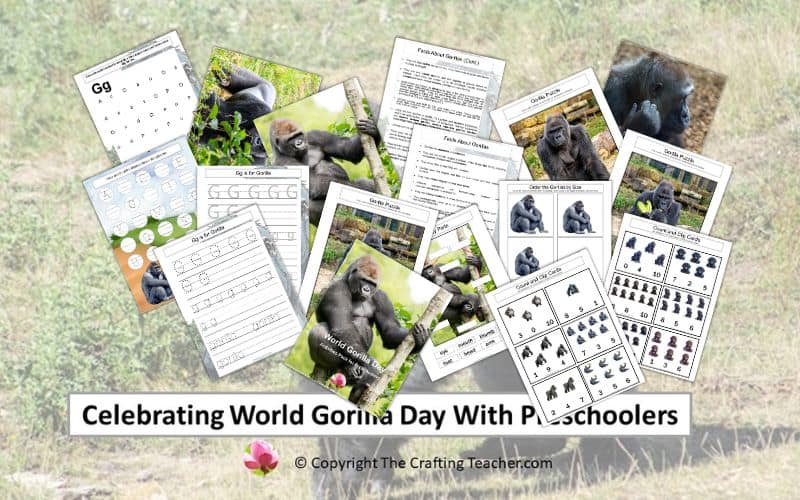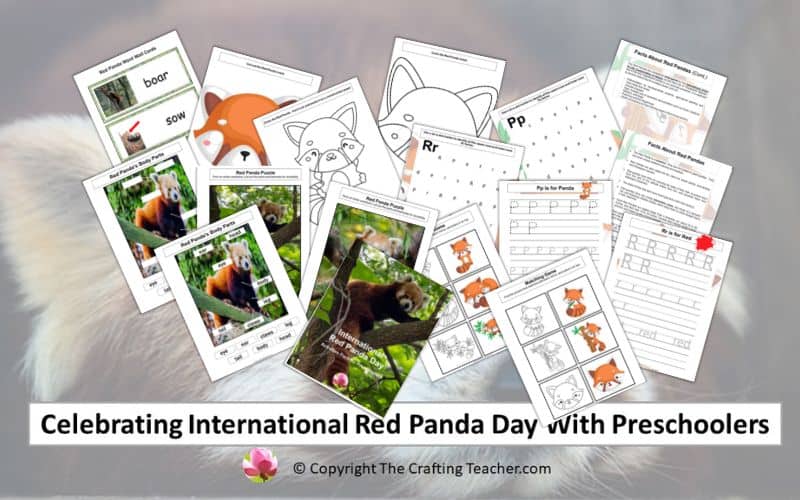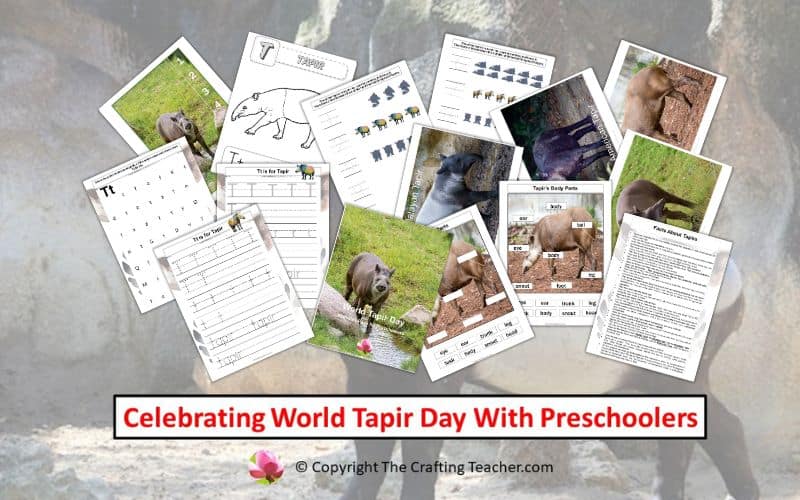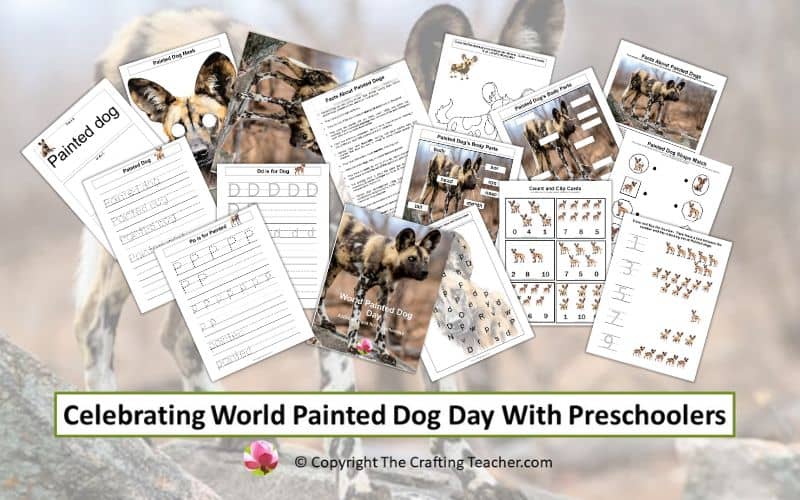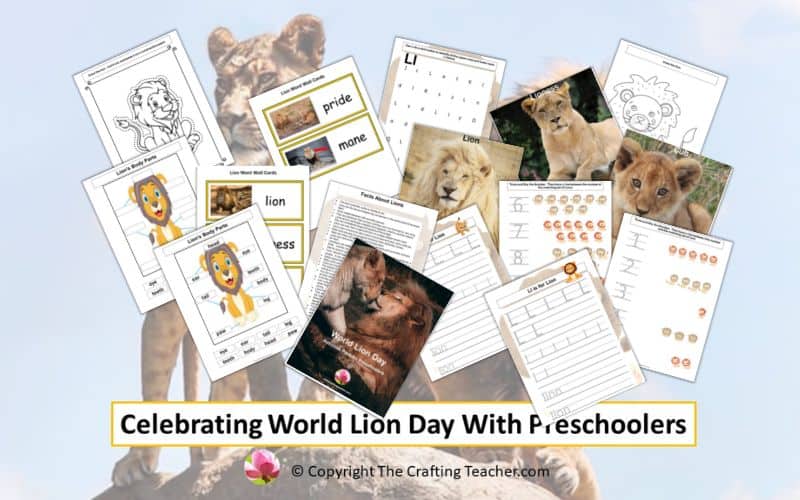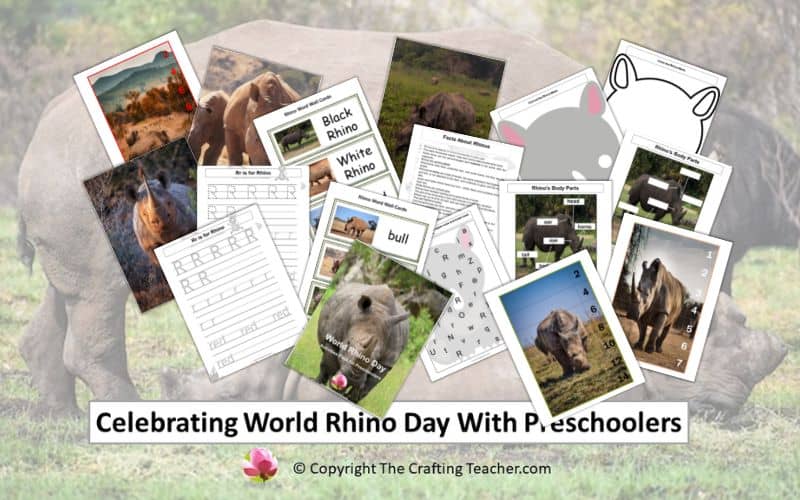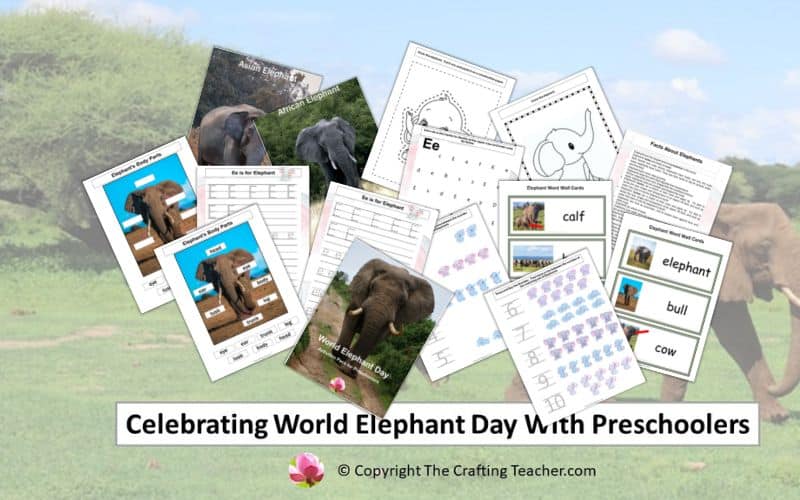Celebrating World Gorilla Day with Preschoolers
Affiliate Disclosure: “This post contains affiliate links, which means I receive a small commission, at no extra cost to you, if you make a purchase using those links.”
World Gorilla Day, which takes place across the globe on September 24th every year, educates and encourages communities to take action to protect the species. It raises awareness about their challenges and the urgent need to protect their habitats to avoid extinction.
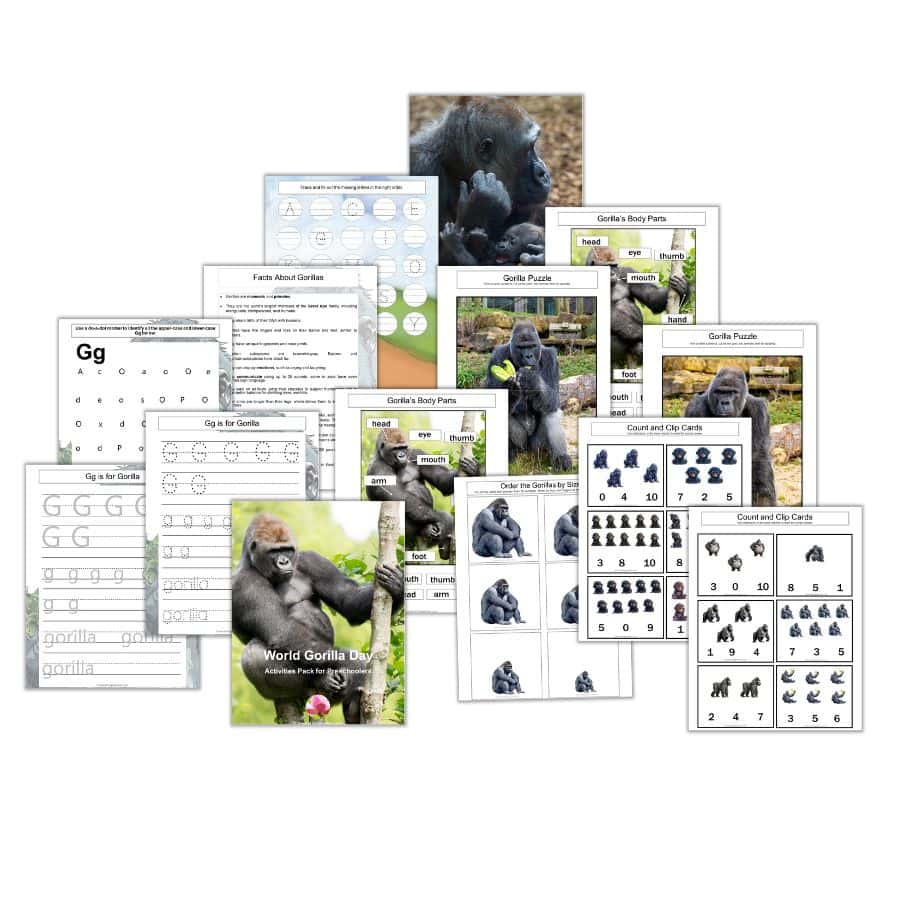
I have included a FREE 21-page World Gorilla Day Pack for your preschoolers. The pack comprises literacy, science, math, and fine motor activities. It can be downloaded at the end of this post.
History of the World Gorilla Day
In 1967, Dr. Dian Fossey began her groundbreaking research on mountain gorillas in Rwanda. Later, she created the Dian Fossey Gorilla Fund International. Their research and funding have saved mountain gorillas from being critically endangered, proving that people’s efforts can and do make a difference.
In 1991, the International Gorilla Conservation Programme (IGCP), a coalition of international conservation organizations, was formed to ensure that the critically endangered mountain gorillas are conserved in their habitat in the mountain forests of the Virunga Massif in Rwanda, Uganda, and the Democratic Republic of the Congo. The IGCP is a joint effort between the World Wide Fund for Nature, Fauna & Flora International (WWF) and the African Wildlife Foundation.
Mgahinga Gorilla National Park was created in 1991 for gorillas. This national park in southwestern Uganda covers an area of 33.9 km².
The Great Ape Conservation Fund was established in 2000 to protect five primate groups, including gorillas, chimpanzees, bonobos, orangutans, and gibbons.
In 2017, the Karisoke Research Center, operated by the Dian Fossey Gorilla Fund International, celebrated its 50th anniversary. It was selected by conservation organizations and individuals who gathered to start a movement highlighting the terrible situation that gorillas are in and encouraging support for their survival.
Other organizations protecting gorillas are:
- The Gorilla Organization supports rangers in the Democratic Republic of Congo who protect gorillas, monitor their health, and collect conservation data.
- The Gorilla Foundation is best known for conducting the most extended interspecies communication study in history (almost five decades), the only one involving gorillas: Project Koko.
- Conservation Through Public Health improves primary healthcare in Africa’s protected areas, enabling the coexistence of humans, wildlife, and livestock.
- Wildlife Conservation Society protects gorillas in the Congo and other iconic creatures, such as tigers in India and wolverines in the Yellowstone Rockies.
- Berggorilla & Regenwald Direkthilfe Ev focuses on the survival of particularly at-risk gorilla populations, supporting forest conservation and gorilla protection.
- Arcus Foundation funds projects that promote the conservation of gorillas, chimpanzees, bonobos, orangutans, and gibbons.
Facts About Gorillas
- Gorillas are the largest Great Ape family members, including orangutans, chimpanzees, and humans.
- They share 96% of their DNA with humans.
- Gorillas have five fingers and toes on their hands and feet, similar to humans.
- They have unique fingerprints and nose prints.
- Western subspecies are brownish-gray. Eastern and mountain subspecies have black fur.
- They can display emotions, such as crying and laughing.
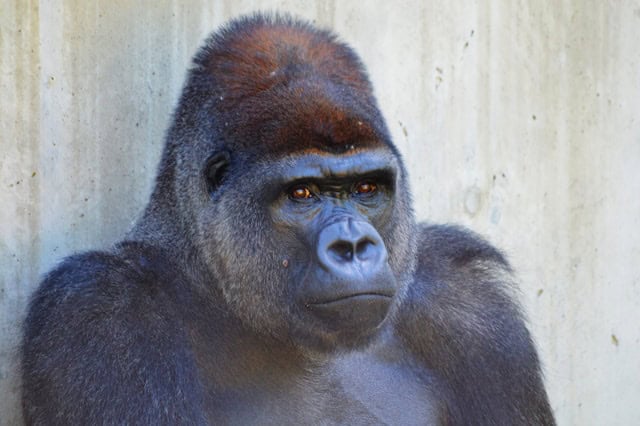
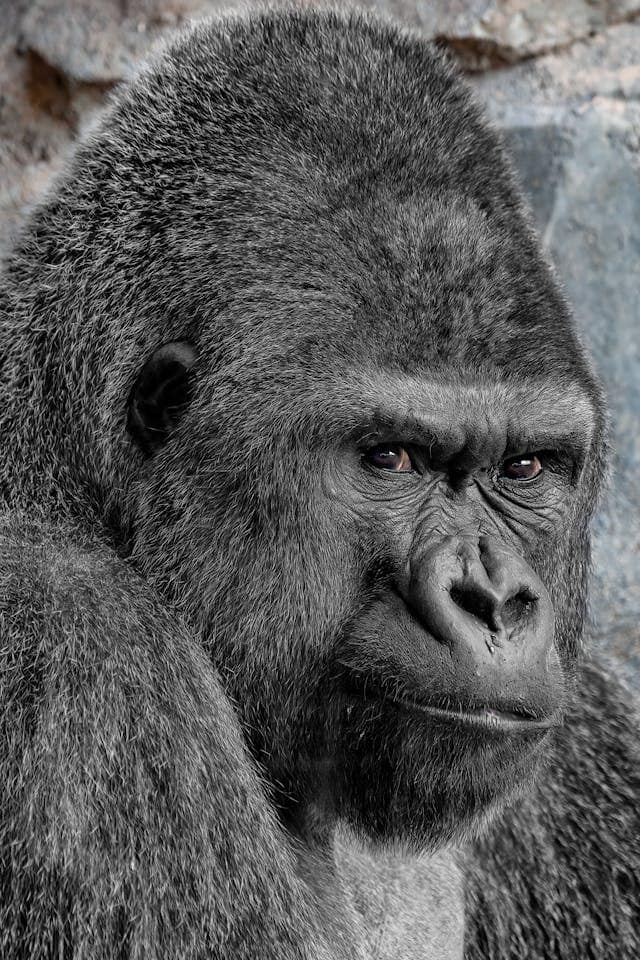
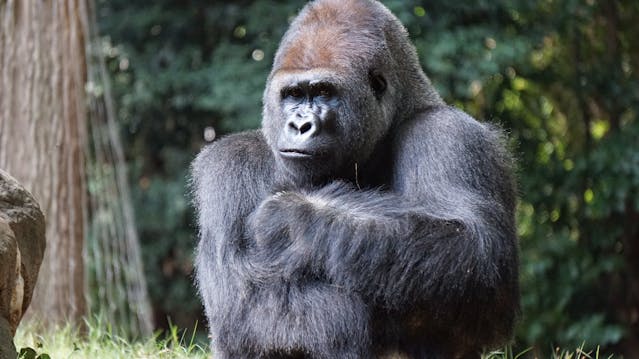
- They communicate using up to 25 sounds; some in zoos have even learned sign language.
- They walk on all fours, using their knuckles to support themselves and to improve their balance when climbing trees and hills.
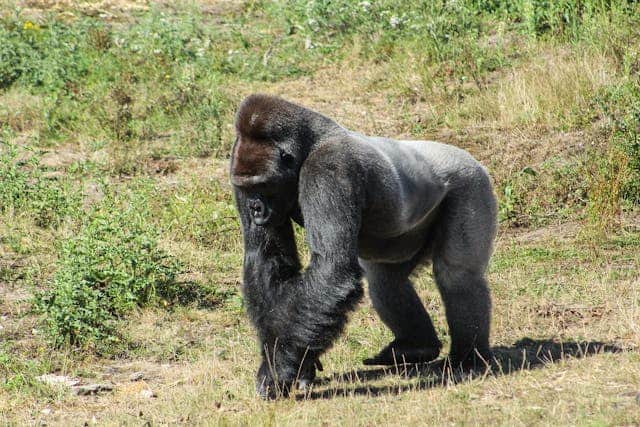
- Their arms are longer than their legs, which allows them to swing high on the trees.
- Gorillas are very clever and use tools to perform tasks, such as sticks, to scoop up insects and determine the depth of bodies of water. They also use bamboo to make ladders to help baby gorillas reach the treetops.
- They are primarily herbivores (plant eaters), and their diet consists of fruit, stems, leaves, and roots, but some species also eat insects and snails.
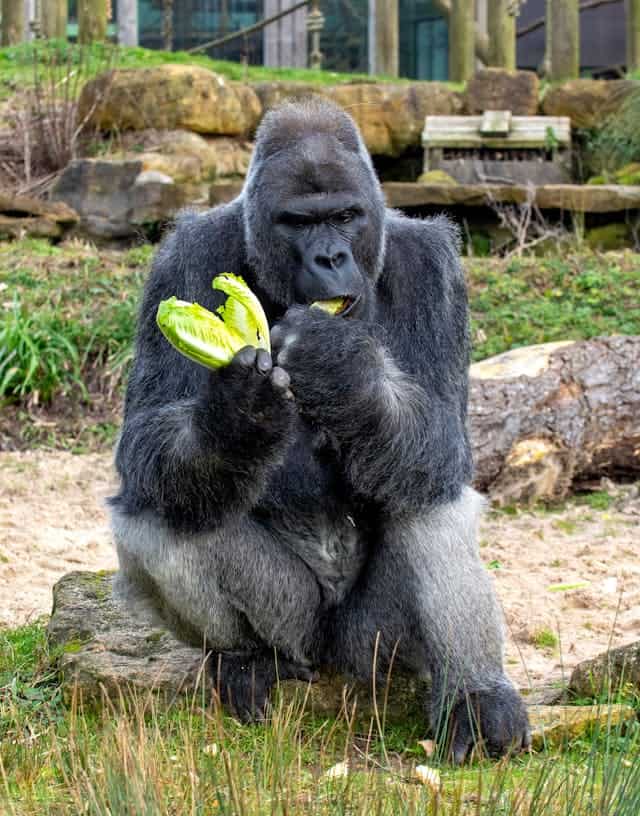
- Male gorillas can reach up to six feet tall and weigh 600 pounds, while females can weigh up to 200 pounds.
- Gorillas live in the forests, swamps, and mountains in West Central and East Central Africa.
- They are most active during the day; they make nests of grass and leaves to sleep in at night.
- They are very social animals who live together in groups known as troops. Each troop can contain up to 30 individuals, usually including a dominant male, several females, and their young offspring.
- Adult males are known as silverbacks due to the silvery-colored hair on their backs. They decide where the group will go, when they will eat, and where they will sleep. They are more than ten times stronger than an average human and bite with more power than a lion, but they only use their full strength to protect their troops against threats from other gorillas and leopards, the only natural predators.
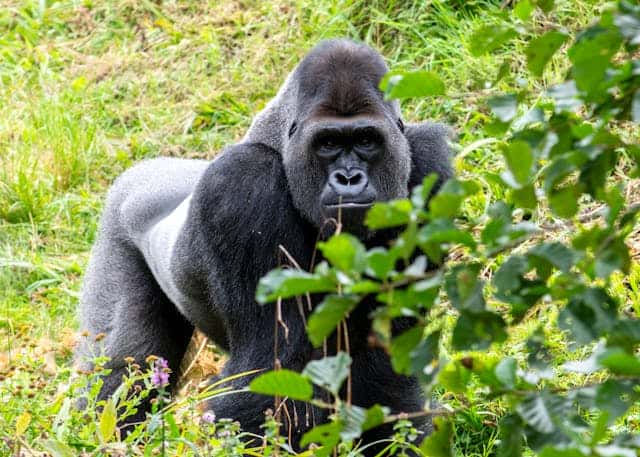
- Female gorillas give birth to one baby every 4–6 years. Young gorillas share their mother’s nest until they are about three years old and ride on their mother’s back.
- There are two species of gorilla, the Eastern and Western subspecies, which are split into two groups known as subspecies. The four subspecies are eastern lowland gorillas, eastern mountain gorillas, western lowland gorillas, and western cross-river gorillas.
- Gorillas can live up to 50 years in the wild and 55 years in zoos.
- These apes risk extinction due to low reproductive rate, habitat destruction due to farming and land development, catching human diseases when they venture close to villages, and poaching.
- Poachers kill entire groups of gorillas to sell their fur, cut off their hands for trophies, and steal the babies to be sold.
- Mountain Gorillas and Eastern Gorillas are classified as endangered, and Western Gorillas are considered critically endangered.
How to Celebrate World Gorilla Day
We hold the power to make a difference. Here’s how you can help:
- Learn About Gorillas – As I always say, you cannot teach what you don’t know. Getting to know gorillas will allow you to teach others about them.
- Introduce Gorillas to Your Children – Bring a stuffed or plastic gorilla to the center of your circle time area, and encourage your preschoolers to talk about what they know by asking questions. For example, you can include a Venn Diagram you can build upon during the theme’s development.
- Use Gorilla Photos or Posters – You can find many gorilla photos online that you can download, print, and laminate to hang on the walls. Use them to talk to the children (and parents) about gorillas while decorating your classroom or home school area.
- Bring Books and Toys to Your Centers – These fabulous resources help children learn about gorillas and entice them to use their imaginations to build structures or create dramatic plays. You can get this cute stuffed gorilla and realistic figurines HERE and HERE.
- Include Gorilla Puzzles – These resources provide multiple benefits to children and are a great way to get them excited about these animals. You can find some on Amazon, like this Mountain Gorilla Wooden Puzzle and this 4D Master Gorilla Model Puzzle.
- Have a Gorilla Hunt – Gather multiple gorilla figurines or print and laminate pictures, hide them throughout your classroom or playground, and invite the children to search for them.
- Play “Follow the Gorilla” – Ask a volunteer to play the gorilla part, and the rest of the children must follow the rhythm and reproduce the actions like you would on the “Follow the Leader” game.
- Change Your Dramatic Play Area – Set a green blanket or sheet on the floor in the Dramatic Play area to represent grass. Add plastic or actual bushes and maybe gorilla toys, masks, or crowns. Invite the children to pretend to be gorillas or gorilla vets.
- Play “Monkey, Monkey, Gorilla” – Select a volunteer pretending to be the gorilla to chase the other children, as he would on the “Duck, Duck, Goose” game until he touches one. The child touched by the gorilla becomes the gorilla for the next round.
- Introduce or Review the Gg for Gorilla – Preschoolers can repeat the letter’s name and sound, find words that start with it, and trace or copy it using crayons, markers, or pencils.
- Practice Visual Discrimination – Have the children organize toy gorillas and pictures by size, from larger to smaller, and vice versa.
- Sort Animals – Provide a variety of animal types (jungle, farm, insects, ocean life, etc.), and invite your children to sort them.
- Provide Gorilla Puzzles – Children love this type of activity, and you can use the opportunity to talk to them about these animals.
- Plan Crafts – Have your preschoolers make gorilla crafts. You can also invite the families to make crafts at home to represent gorillas and organize an exposition for all the families.
- Dress as Gorillas or in Gorilla-inspired Clothes – This could be a fun activity for World Gorilla Day, and you can have a parade around the school or your neighborhood so the children can show their outfits. You can find some on Amazon, like this shirt or this one, this dress or this set, and this costume.
- Use Social Media – We all know how powerful this tool is. Use your platforms and invite your preschoolers’ parents, family, and friends to do the same to promote the protection of gorillas.
- Organize a Field Trip – Going to your local zoo to observe the gorillas is an excellent way for your children to learn about this magnificent mammal. If that is impossible, invite your families to do the same independently.
- Show Videos About Gorillas – YouTube has some good ones you can use to show your children how gorillas act, and their natural habitat, such as Gorillas from Nat Geo Kids, Gorillas for Kids by Learn Bright, and Gorillas are Highly Intelligent! by BBC Earth Kids.
- Visit Organizations Offering Special Activities – Two examples are the Little Rock Zoo in Arkansas and Zoo Atlanta in Georgia, which will offer a variety of events and interactive activities related to this important day.
- Choose Sustainable Products – Use products from Rainforest Alliance or Fair Trade Certified to promote businesses that aim to reduce threats to many endangered species, including gorillas, and avoid buying and using products that contribute to deforestation and habitat destruction.
- Spread the Word – Use social media and other platforms and tag #worldgorilladay to raise awareness. Upload pictures, use captions, and share information about gorillas, their ecological benefits, and the critical need for conservation efforts.
- Participate and Volunteer – Engage in local conservation projects or volunteer opportunities that support gorilla habitats.
- Organize a Fundraiser to Support Conservation Organizations – dedicated to gorilla conservation and research, such as Gorilla SAFE, The Gorilla Organization, the Dian Fossey Gorilla Fund, WWF, and the Gorilla Doctors.
- Buy World Gorilla Day Products – The Gorilla Fund and the Virunga Organization sell many products to collect the necessary funds to support their efforts all year round, including the work for the hundreds of rangers working hard to protect gorillas and their habitats.
- Donate to Support Gorilla Conservation – Donate directly to the Gorilla Fund. You can give once or monthly, and every cent counts.
- Host a World Gorilla Day Event – Organize a special event at your school or neighborhood, inviting volunteers to sell products, food, art, and other items related to gorillas and experts from your local zoo or conservation organization to offer information and collect funds.
Books About Gorillas
These are some of my favorite books about gorillas. If you don’t have any available, you can go to your local library or a used bookstore or use my links on the titles to get them from Amazon quickly. Get as many as possible, read them to your preschoolers, and fill your library and centers.
- Amazing Gorillas! by Sarah L. Thomson is an excellent book for learning facts about gorillas, paired with WCS’s global research and conservation efforts, educational programs, and stunning photographs.
- Good Night, Gorilla by Peggy Rathmann is a funny story about a gorilla sneaking behind the zookeeper’s back to see who gets the last laugh in this riotous good-night romp.
- Little Gorilla by Ruth Bornstein uses soothing, rhythmic text and expressive illustration to create a heartwarming story about the security and constancy of love.
- Gorillas by Seymore Simon is a non-fiction science book that uses full-color photographs to introduce these fascinating animals.
- Safari Readers: Gorillas by Tristan Walters teaches children critical scientific facts while immersing them in the natural world.
- Ranger Rick: I Wish I Was a Gorilla by Jennifer Bove teaches all about gorillas using fascinating facts, vivid wildlife photographs, a Wild Words glossary, and a hands-on activity about making a snack like a gorilla.
- Go Go Gorillas: A Romping Bedtime Tale by Patrick Wensink uses colorful, dynamic illustrations and bouncy text that will bring to life not-so-sleepy gorillas in this lively, rhyming bedtime tale.
- Gorillas Up Close by Christena Nippert-Eng is filled with facts and photos and takes us into the world of gorillas. It explores the differences between gorillas in zoos and the wild and their similarities with humans.
- Ivan: A Gorilla True Story by Katherine Applegate uses powerful text and evocative illustrations to tell the story of a gorilla captured as a baby and brought to a mall in Tacoma, Washington, to attract shoppers. Gradually, public pressure built until a better way of life for Ivan was found at Zoo Atlanta.
- Everything You Should Know About Gorillas by Anne Richards will allow your child to learn more about our wonderful world, using a fun and engaging approach that will light a fire in the children’s imagination.
Pin It For Later
If you are in a rush and don’t have time to read the post and download the printable but want to save it, pin it to one of your Pinterest boards for later.

World Gorilla Day reminds us that our actions, good or bad, can influence our lives and the lives of entire species worldwide. We must finally understand our responsibility to keep the balance on our planet, committing to advocate for action to protect all lives and ensure that our children grow with the same desire. This day, and for the rest of our existence, let us rise as protectors of the magnificent gorillas.
I hope you enjoy these ideas and that they help you have fun with your preschoolers during the World Gorilla Day celebration. To get the FREE pack, click on the link below and enter your information for an immediate download.
Be happy, safe, and creative. I wish you well.
Love,

P.D. Please let me know if any of these ideas worked for you or if you think I need to add or replace something. My goal is to help you in any way I can, and I wouldn’t say I like anything better than to post something that you might find helpful.

